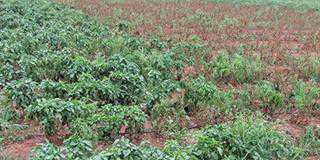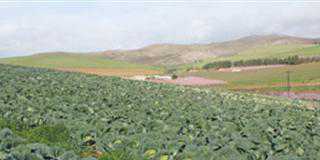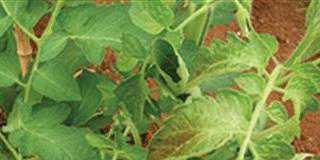
Photo: Wikimedia Commons
Each year, there are reports of farmers who suffer losses because of the incorrect use of agrochemicals. This can be due to using the wrong products, such as when a herbicide is mistaken for a pesticide, or the incorrect use of the right product, according to Rosa Kruger, founder of the Vineyard Workers’ Development Trust.
Kruger says using the wrong product can wipe out an entire orchard or vineyard. Incorrect use of a product can cause financial losses by failing to protect crops against pests and diseases, or having a negative impact on plant growth, yield and product quality.
Using incorrect dosages, or the overuse of products with the same active ingredients or from the same chemical group, can also result in pests, diseases or weeds developing resistance to specific chemical groups, leaving farmers with fewer management options.
The incorrect use of agrochemicals can be harmful to the environment, causing leaching into water systems or destroying beneficial insects, such as bees.
It can also be dangerous to human health. For example, people may suffer from ailments if they ingest or inhale a product, or their skin, eyes and sinuses may be affected.
Moreover, health problems might only appear later in life, due to repeated exposure, when the damage is already done and there is little that can be done to reverse the problem.
Trix Quixley, technical manager responsible for vineyards and berries at NexusAG, says many older agrochemical workers have serious health problems today because they once worked with dangerous chemicals without using any personal protective equipment (PPE).
Most of these dangerous chemicals have been banned or are in the process of being phased out. The use of PPE is now also mandatory and enforced by industry bodies and certification systems such as the Integrated Production of Wine, and the Wine Industry Ethical Trade Association.
Not adhering to prescribed withholding periods or using the wrong product may also negatively affect the safety of a product for consumption.
When it comes to grapes, this is monitored by doing pesticide residue analyses of the fruit at harvest; grapes containing unacceptable levels are not used for consumption.
The legislation governing use
Quixley defines an agrochemical as any product that protects plants or crops, such as an insecticide, a fungicide or a herbicide, or improves plant health, such as a fertiliser, foliar feed or plant growth regulator.
She adds the South African National Standard (SANS) 10206:2010 governs the way in which agrochemicals are to be handled, stored and disposed of.
People who work with agrochemicals have to attend regular training to ensure they are equipped to do their jobs safely. They also need to be literate so they can read the labels and usage instructions on products.
In addition to displaying names and usage instructions, a label should indicate the chemical composition of the product, a physical description of it (for example, whether it comprises a fluid, powder or granules), the withholding period, the expiry date and the level of toxicity.
Agrochemicals should be stored in their original packaging, with the label intact. To prevent confusion, labels must be repasted if they fall off; they should not be replaced with handwritten notes.
Products should be used before their expiry date. Farmers should therefore inform their agrochemical supplier about what they have in storage so that these products can be incorporated into their crop protection plan before new products are bought.
Disposing of expired products can be costly, as it can only be done by specialist companies. The contents of containers without labels should be analysed for identification to ensure they are disposed of correctly.
In addition, empty product containers need to be disposed of correctly.
“Wash canisters out at least three times, punch holes in them, and store them in a safe place. No empty agrochemical containers may be used to store food, water or animal feed. Various recyclers are available to remove used containers safely from the farm and dispose of them,” says Quixley.
Agrochemicals are colour-coded and classified into five groups based on their toxicity, from green (unlikely to cause any harm) to red (extremely toxic).
“Not all chemicals are equally dangerous, but even those classified as safe could be harmful if used irresponsibly,” cautions Quixley.
She adds that workers should use the labels to double-check themselves, particularly if the product specified on the spray instruction seems to differ from the product in hand.
Farmers should not use their own initiative when working with agrochemicals, says Quixley; it is better to ask an agrochemical adviser whether a particular product is suitable for an application, or how to substitute one product with another to avoid mistakes.

Proper use of Protective gear
By law, farmers have to supply workers, even those who only mix or hand out the products, with the right-sized PPE.
These include raincoats, hats, rubber gloves, overalls, face masks, rubber boots, aprons, safety goggles and respirators, depending on the level of danger presented by a product.
Workers, on the other hand, should take responsibility for wearing these, and doing so correctly. “The gear might seem like overkill, or be hot and uncomfortable, but it’s your responsibility to ensure that you stay safe and healthy in the workplace,” Quixley warns.
The wearing of PPE is also required when working with organically certified products, such as copper, sulphur and plant extracts. “Plant extracts might be organic, but they can still be harmful,” she says.
PPE have to be cleaned after each use, preferably in a dedicated area with a washing machine solely for this purpose. It should not be washed at home, where it may contaminate other clothing or material. Washing should take place as soon as possible after usage to prevent agrochemicals from being absorbed by the clothing.
To prevent clean PPE from absorbing chemicals, it should be stored away from any agrochemicals. It should also be checked for holes and tears before each use and replaced if needed.
Staff should not eat, drink or smoke while working with agrochemicals, whether they work with the chemicals themselves or hand them out at the farm’s agrochemical storeroom.
“Wash your hands and face before you eat or drink anything. Don’t even think of taking a quick smoke break in between spray applications or in the storeroom. This is not only to avoid accidental inhalation, but also because many of these products are flammable,” says Quixley.
People should wash their whole body with soap and water after spraying or mixing agrochemicals. She adds that nobody should be allowed in an orchard or on a land after a chemical application has been made.
The re-entering time may range from a few hours to a few days, depending on the product. The pre-harvest interval (the minimum time that elapses before a product is safe to be harvested after application) should also be considered when selecting a product to use.
Using a certain agrochemical too close to harvest may result in the market rejecting the product.
Storing hazardous products
The way in which chemicals are stored, as well as the place where they are stored, has to conform to legislation (SANS 10206:2010).
Typically, chemicals are stored in a well-ventilated building constructed out of bricks and concrete. The building should also have enough fire extinguishers, with the number required depending on the size of the building.
By law, red-label or toxic products should be locked up separately to keep them safe. Kruger says it is also good practice to separate herbicides, fungicides, pesticides and other agrochemicals to prevent mistakes: “The chances of a herbicide being mistaken for a pesticide or fertiliser are lowered by doing this.”
No petrol, oil, fertiliser or animal medicines are allowed in the agrochemical store.
Products may not be stored directly on the floor; they must be packed on shelves or pallets that have been treated to prevent chemical absorption, or covered with a layer of plastic inserted between the product and the shelf or pallet.
None of the products stored in the agrochemical store may be taken home or used for domestic purposes.
Quixley explains that agrochemicals are specifically formulated for agricultural use; chemicals formulated for domestic purposes are generally less harmful and are used at different dosages.
Records should be kept of which product was used when, as well as how much was used. This should be cross-referenced with what was applied and the volumes prescribed by an agrochemical adviser.
Treatment in the case of Poisoning
A person who has been exposed to agrochemicals and shows any symptoms, such as headaches, dizziness or nausea, should receive medical attention as soon as possible. “The sooner they are treated, the better,” says Quixley.
Contaminated clothing should be removed and the affected person turned on his or her side to ease breathing and prevent vomit from being swallowed. The victim should also be kept warm and not given anything to eat or drink, as this might exacerbate the situation.
The label of the product to which the person was exposed should be read carefully for first aid instructions, and this information given to the doctor carrying out the treatment.
Email Trix Quixley at [email protected], or Rosa Kruger at [email protected]










